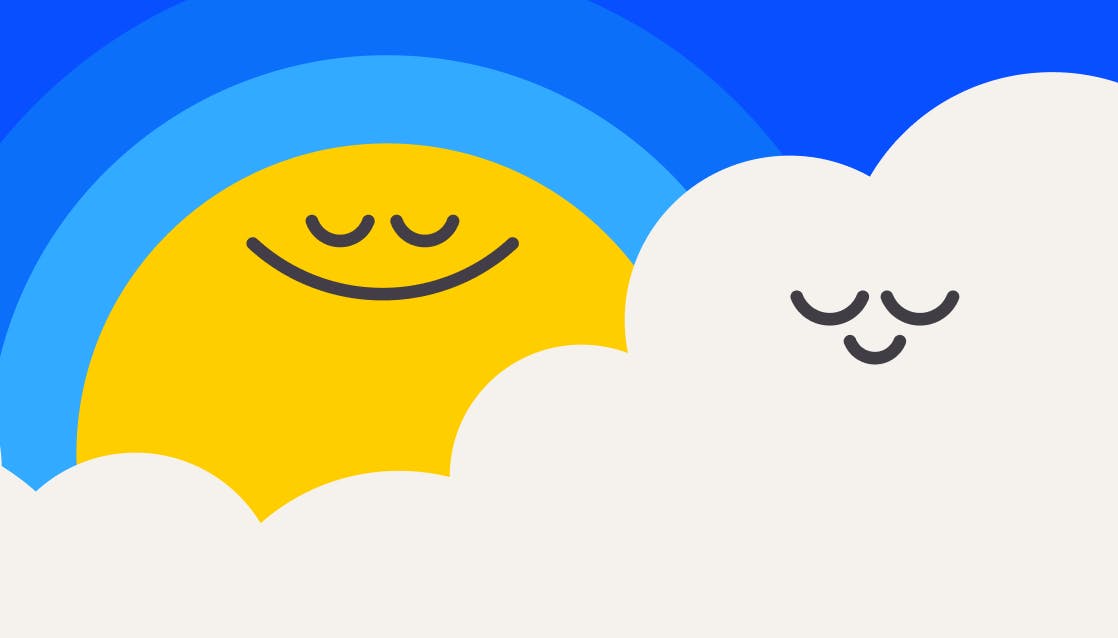5 mindfulness activities for kids
One of a parents’ greatest wishes is for their children to be healthy and happy. It’s also fair to say that as part of that wish, parents would like to see their children have the ability to stay present, focused, and engaged — even in the midst of constant distraction by screens and devices.
Teaching mindfulness can be one of the most valuable gifts a parent can give to their children, because it can help equip them to take life in stride, no matter what it throws their way. Mindfulness helps them to stay in the present moment, be less reactive, and not get carried away with every thought and emotion. If the next generation can learn to be more mindful — less reactive, less judgmental, and less caught up in their heads — then we'll all have a healthier and happier society to look forward to.
Where to start? These 5 easy mindfulness activities for kids will help them look after their mind and to teach them how to cultivate peace, happiness, and compassion for the rest of their lives.

How can we teach kids mindfulness?
Key takeaways:
- Mindfulness for kids benefits their mental and physical health
- There are quick, easy ways for kids and families to practice mindfulness
- The Headspace app offers mindfulness activities for ages 3-5, 6-8, & 9-12
Why teach mindfulness to kids?
Not only is there strong evidence that mindfulness can positively affect an adult’s mental and physical health, but there's also growing research that mindfulness exercises for kids can have significant benefits as well — particularly in terms of resilience to stress and improving children’s cognitive performance, according to a 2014 review of mindfulness-based interventions in schools.
For example, researchers have found that mindfulness-based cognitive therapy for children (MBCT-C) has been shown to improve attention and behavioral problems and reduce anxiety. A 2004 study found that children with ADHD who practiced meditation with their families for 6 weeks showed less anxiety and improved self-esteem, relationship quality, and concentration at school.
Another study showed that kids who learned mindfulness-awareness practices had a better executive function after eight weeks of training. And yet another study found that kids who participated in an afterschool program consisting of yoga and meditation felt happier and more relaxed.
The benefits of meditation for kids extend far beyond improving focus and performance, too. In fact, researchers found that kids who participated in a mindfulness-based school program showed greater empathy, perspective-taking, and emotional control, compared to kids who did not participate. When we teach children mindfulness, we are teaching them invaluable lessons about empathy, compassion, and, quite simply, how to be kind to other people.
Of course, parents can always ask your kids to join them in their meditation practice. But there are plenty of other mindfulness activities for kids that can also have a big impact. Just remember: It doesn’t really matter which activity parents choose. The most effective way to teach children about mindfulness is to practice it ourselves. After all, kids are constantly watching how their parents act and what they say, soaking up information like sponges. That’s why modeling a regular meditation practice can go a long way in helping them to establish their own mindfulness habits.
5 easy ways to teach children mindfulness
Breathing. Focusing on the sounds of their own breath and motion of their bellies rising and falling helps children learn to be in the present moment. Here’s an idea that’s particularly fun — and effective! — for young children: on the inhale, tell them to pretend they’re smelling something yummy, like their favorite flower or chocolate brownies in the oven; on the exhale, they can pretend to blow out candles. And, if your child can’t sit still for more than a couple of minutes, don’t sweat it: start with 10 breaths and over time, build up to several minutes.
Create a mindful bedtime ritual. A regular mindfulness ritual at the end of the day can help your child to calm their body, reflect on their day, and set them up for better sleep. One way to do this is with a short body scan: have your child close their eyes and focus on their head, arms, belly — working their way through all the body parts. Or, they can do a simple gratitude meditation by having them share one thing they're thankful for.
Take a walk. Walking isn't only a great way for kids to practice mindfulness and notice the present moment, but they also get exercise and fresh air. On the walk, take a few minutes to be completely silent and pay attention to all the sounds that you hear: passing cars, wind rustling dry leaves, a dog barking. Afterwards, talk about what everyone heard, and how that made each other both feel.
Eat a snack … mindfully. Mindful eating is a practice that engages all 5 senses, and it’s fun and easy to do. Before eating a snack, ask kids to think about its appearance, shape, size, color, smell, and texture. Then, when they place it in their mouths, think about the sensation and the process of eating it. By learning to slow down and notice food, kids are more likely to savor it, digest better, and enjoy the meal more.
Meditate together. Former Buddhist monk and Headspace co-founder Andy Puddicombe says "It’s almost as though meditation was designed for kids. They just ‘get it’– there is this elasticity and freedom in their minds which allows them to be present in the moment and free from any external thoughts or pressures. By introducing meditation and mindfulness at an early age, not only can we build on this and help nurture their mind development, but we are also making meditation simple and accessible." That's why Headspace offers fun, engaging activities that teach kids the basics of mindfulness. These activities involve everything from breathing exercises and visualizations to focus-based meditation. And because different exercises work best for different ages, Headspace offers customized sessions for three age groups: 5 and under, 6 through 8, and 9 through 12.
Watch and try more mindfulness tips for kids and families

Watch Headspace Breathers: Helping kids focus - 6 min
How the Headspace app can help kids and families become more mindful
Looking for easy meditations to do with kids? We created Headspace for Kids in the Headspace app to help children be healthy and happy, not just now but for the rest of their lives. Subscribers can access several mindfulness activities made just for children including:
-
Calm - ages 3-5, ages 6-8, ages 9-12. Teach your child the fundamentals of meditation with this simple, fun breathing exercise.
-
Cool Off - ages 3-5, ages 6-8, ages 9-12. Whether it’s anger or frustration, use this exercise to help melt away any uneasy feelings.
-
Good Morning - ages 3-5, ages 6-8, ages 9-12. This quick meditation will help you and your child start the day off right.
-
Rest & Relax - ages 3-5, ages 6-8, ages 9-12. In this exercise kids learn how to recognize calmness and be less reactive.
-
Kindness - ages 3-5, ages 6-8, ages 9-12. A visualization exercise that will teach your child about openness and generosity.
-
Appreciation - ages 3-5, ages 6-8, ages 9-12. A visualization to help kids get in touch with a feeling gratitude for the world around them and the people in it.
-
Paying Attention - ages 3-5, ages 6-8, ages 9-12. Kids will use their imagination to practice a relaxed, precise kind of focus.
-
Settling Down - ages 3-5, ages 6-8, ages 9-12. Help your child focus on a light, playful attitude towards life.
-
Goodnight - ages 3-5, ages 6-8, ages 9-12. Help your little one get a good night’s rest with this relaxing mindfulness activity.
-
Sleep Tight - ages 3-5, ages 6-8, ages 9-12. When it’s time for bed, use this exercise to count down to sweet dreams.
-
Stay Positive - ages 6-8, ages 9-12. Anxious or worried feelings arise from time to time. We’re going to take a few minutes to step out of those thoughts and focus on the body.


Be kind to your mind
- Access the full library of 500+ meditations on everything from stress, to resilience, to compassion
- Put your mind to bed with sleep sounds, music, and wind-down exercises
- Make mindfulness a part of your daily routine with tension-releasing workouts, relaxing yoga, Focus music playlists, and more

Stay in the loop
Be the first to get updates on our latest content, special offers, and new features.
By signing up, you’re agreeing to receive marketing emails from Headspace. You can unsubscribe at any time. For more details, check out our Privacy Policy.
- © 2025 Headspace Inc.
- Terms & conditions
- Privacy policy
- Consumer Health Data
- Your privacy choices
- CA Privacy Notice



